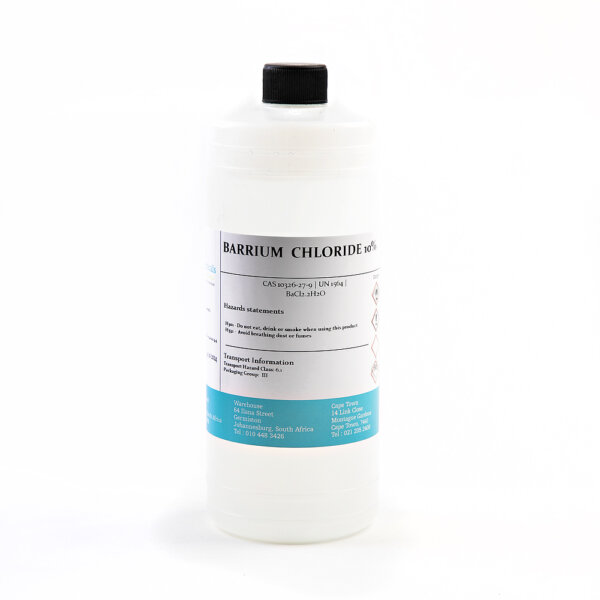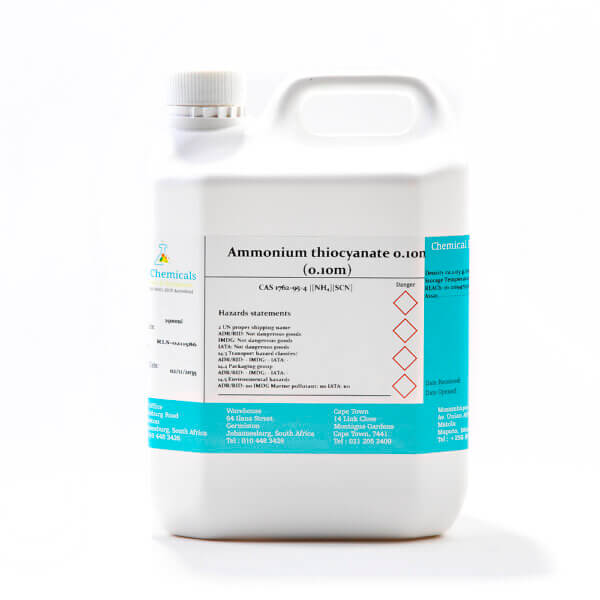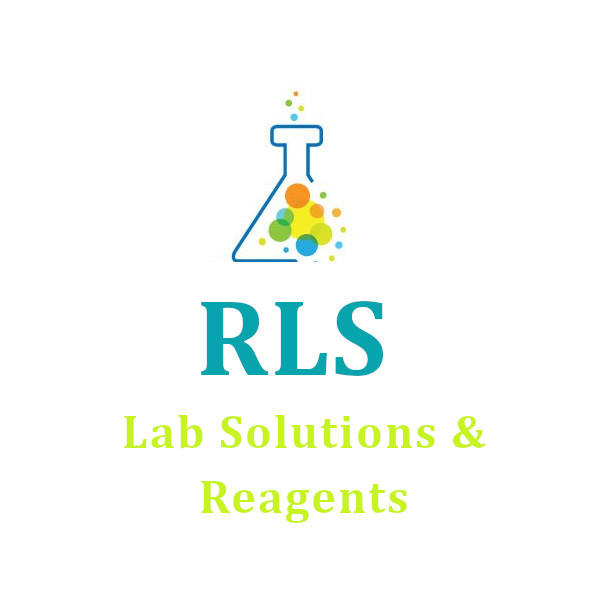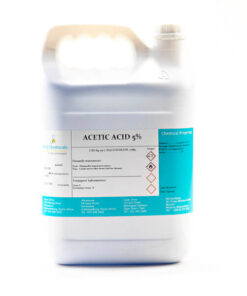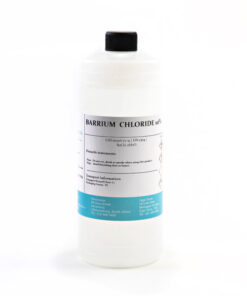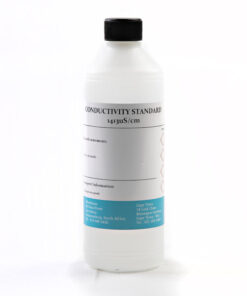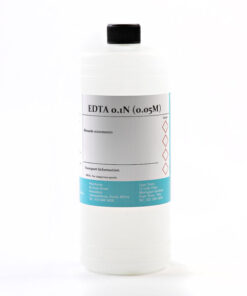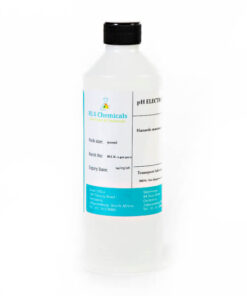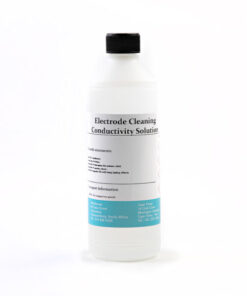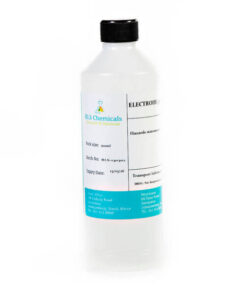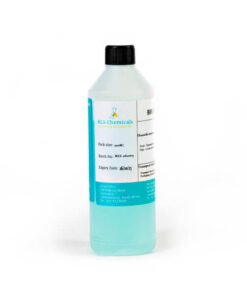Barrium chloride 0.5m – 2500ml
R279.49 Ex VAT
Reflecta Laboratory Supplies provide quality chemical solutions and reagents manufactured inhouse. Our RLS Chemical solution complies with NIST standards
Reflecta Laboratory Supplies provide quality chemical solutions and reagents manufactured inhouse. Our RLS Chemical solution complies with NIST standards
Barium chloride 0.5m – Identification of Product Chemical Code: RLS-SOL-B03 Chemical Name: Barium Chloride 0.5M Solution Chemical Grade: Chemical Formula: No Data Available Chemical Weight: CAS No: Chemical Synonyms: Barium Chloride Solution 0.5M
• Chemical Code: RLS-SOL-B03
• Chemical Name: Barium Chloride 0.5M Solution
• Chemical Grade: NA
• Chemical Formula: No Data Available
• Chemical Weight: NA
• CAS No: NA
• Chemical Synonyms: Barium Chloride Solution 0.5M
• Hazards Identification: Signal Word: Warning Supplemental Hazard Information: Additional Hazard Information: This substance/mixture contains no components considered to be either persistent, bio-accumulative and toxic (PBT), or very persistent and very bio-accumulative (vPvB) at levels of 0.1% or higher.
• Hazards statements: H302 – Harmful if swallowed. H319 – Causes serious eye irritation.Precautionary statements P305 + P351 + P338 – IF IN EYES: Rinse cautiously with water for several minutes. Remove contact lenses, if present and easy to do. Continue rinsing.
• Composition of Chemical: Chemical Formula: No Data Available EC No 1272/2008: No Data Available
• First Aid Measures: General Advice: Consult a physician. Show this safety data sheet to the doctor in attendance. If: Inhaled: If breathed in, move person into fresh air. If not breathing, give artificial respiration. Consult a physician. If: Skin Contact: Take off immediately all contaminated clothing. Rinse skin with water/shower. If: Eye Contac: Rinse out with plenty of water. Call in ophthalmologist. Remove contact lenses. If: Swallowed: Immediately make victim drink water (two glasses at most). Consult a physician.
• Firefighting Measures: Extinguishing Media: Use extinguishing measures that are appropriate to local circumstances and the surrounding environment. Hazards Arising: Not combustible. Ambient fire may liberate hazardous vapours. Fire may cause evolution of Hydrogen Chloride gas Advice for Firefighters: Stay in danger area only with self-contained breathing apparatus. Prevent skin contact by keeping a safe distance or by wearing suitable protective clothing.
• Accidental Release Measures: Personal Precautions: Do not breathe vapours, aerosols. Avoid substance contact. Ensure adequate ventilation. Evacuate the danger area, observe emergency procedures, consult an expert. Enviromental Precautions: Do not let product enter drains. Method for Containment: Cover drains. Collect, bind, and pump off spills. Observe possible material restrictions. Take up with liquid-absorbent and neutralizing material. Dispose of properly. Clean up affected area.
• Handling and Storage: Personal Precautions: Change contaminated clothing. Preventive skin protection recommended. Wash hands after working with substance. Enviromental Precautions: Tightly closed. Keep in a well-ventilated place. Keep locked up or in an area accessible only to qualified or authorized persons.
• Exposure Controls: Personal Protection Derived No Effect Level (DNEL) Workers | Application Area | Exposure Routes | Health Effect | Value Barium Chloride (10361-37-2): ZA REL – Time Weighted Average – (TWA) – 0.5 mg/m³ – Expressed as Ba Consumers | Application Area | Exposure Routes | Health Effect | Value No Data Available Predicted No Effect Concentration (PNEC) No Data Available
• Engineering Controls: Technical measures and appropriate working operations should be given priority over the use of personal protective equipment.
• Eye/Face Protection: Safety glasses.
• Skin Protection: Handle with gloves. Full contact – Glove material: Nitrile rubber. Glove thickness: 0.11 mm Break through time: > 480 min. For example KCL 741 Dermatril® LSplash contact – Glove material: Nitrile rubber. Glove thickness: 0.11 mm Break through time: > 480 min. For example KCL 741 Dermatril® L
• Body Protection: Protective clothing.
• Respiratory Protection: Required when vapours/aerosols are generated. Recommended Filter type: filter ABEK
• Physical and Chemical Properties: {‘Appearance’: ‘Colourless Solution’, ‘Odour’: ‘Odourless’, ‘Odour Threshold’: ‘No Data Available’, ‘pH’: ‘ca. 4.3 at 20 °C’, ‘Melting Point’: ‘No Data Available’, ‘Boiling Point’: ‘No Data Available’, ‘Flash Point’: ‘No Data Available’, ‘Evaporation’: ‘No Data Available’, ‘Flammability’: ‘No Data Available’, ‘Upper/Lower Flammability or Explosive Limits’: ‘No Data Available’, ‘Vapour pressure’: ‘No Data Available’, ‘Vapour density’: ‘No Data Available’, ‘Relative density’: ‘No Data Available’, ‘Water solubility’: ‘Completely Miscible’, ‘Partition Coefficien’: ‘No Data Available’, ‘Auto-ignition Temperature’: ‘No Data Available’, ‘Decomposition Temperature’: ‘No Data Available’, ‘Viscosity’: ‘No Data Available’, ‘Explosive properties’: ‘No Data Available’, ‘Oxidizing properties’: ‘No Data Available’, ‘Other Safety Info’: ‘No Data Available’}
• Stability and Reactivity: {‘Reactivity’: ‘No Data Available’, ‘Chemical Stability’: ‘Stable under recommended storage conditions.’, ‘Possibility of hazardous reactions’: ‘May react with: Furan-2-Percarbonic Acid, Halogen-Halogen compounds, Strong oxidizing agents, strong reducing agents, Acids.’, ‘Conditions to Avoid’: ‘No Data Available’, ‘Incompatible Materials’: ‘No Data Available’, ‘Hazardous Decomposition Products’: ‘No Data Available’}
• Toxicological Information: {‘Acute Toxicity’: ‘Mixture: Acute oral toxicity – Acute toxicity estimate: 706.16 mg/kg – Calculation method. Acute inhalation toxicity – Acute toxicity estimate: 9 mg/l; dust/mist – Calculation method Acute toxicity estimate – > 5 mg/l; 4 h ; dust/mist – Calculation method Symptoms: Possible symptoms: Mucosal irritations. Barium Chloride: Acute oral toxicity – LD50 Rat: 118 mg/kg – (IUCLID) – LD50 Rat: 300 mg/kg – OECD Test Guideline 401 Acute inhalation toxicity – Acute toxicity estimate: 1.6 mg/l; dust/mist – Expert judgement’, ‘Skin Corrosion/Irritation’: ‘No Data Available’, ‘Serious Eye damage | Eye Irritation’: ‘Rabbit – Result: irritating – OECD Test Guideline 405’, ‘Cell Mutagenicity’: ‘Genotoxicity in vitro: Ames test – Salmonella typhimurium Result: negative. Method: OECD Test Guideline 471. Mutagenicity (mammal cell test): chromosome aberration. Chinese hamster ovary cells Result: negative. Method: OECD Test Guideline 473. In vitro mammalian cell gene mutation test. Mouse lymphoma test Result: negative. Method: OECD Test Guideline 476’, ‘Carcinogenicity’: ‘No Data Available’, ‘Reproductive toxicity’: ‘No Data Available’, ‘Specific Target Organ Toxicity – Single Exposure’: ‘No Data Available’, ‘Specific Target Organ Toxicity – Repeated Exposure’: ‘No Data Available’, ‘Aspiration Hazard’: ‘No Data Available’}
• Ecological Information: {‘Ecological Toxicity’: ‘Barium Chloride: Toxicity to fish – static test LC50 Leuciscus idus (Golden orfe): 870 mg/l; 48 h. Analytical monitoring: yes. OECD Test Guideline 203. (IUCLID). Toxicity to daphnia and other aquatic invertebrates – Static test LC50 Daphnia magna (Water flea): 14.5 mg/l; 48 h. (ECHA) (referred to the cation). Toxicity to algae – Static test ErC50 Pseudokirchneriella subcapitata (algae): > 100 mg/l; 72 h Analytical monitoring: yes. OECD Test Guideline 201. Toxicity to bacteria: Static test EC50 activated sludge: > 943.1 mg/l; 3 h Analytical monitoring: yes. OECD Test Guideline 209. Toxicity to daphnia and other aquatic invertebrates (Chronic toxicity): Semi-static test Daphnia magna (Water flea): 5.8 mg/l; 21 d. (ECHA)’, ‘Ecological Persistence and degradability’: ‘No Data Available’, ‘Bioaccumulative Potential’: ‘No Data Available’, ‘Mobility in Soil’: ‘No Data Available’, ‘Results of PBT and vPvB Assessment’: ‘Substances in the mixture does not meet the criteria for PBT or vPvB according to Regulation (EC) No 1907/2006, or a PBT/vPvB assessment was not conducted.’, ‘Other Adverse Effect’: ‘Discharge into the environment must be avoided’}
• Disposal Considerations: Waste Treatment Methods: Waste material must be disposed of in accordance with the national and local regulations. Leave chemicals in original containers. No mixing with other waste. Handle uncleaned containers like the product itself.
• Transport Information: {‘UN Number’: ‘ADR/RID: 3287 IMDG: 3287 IATA: 3287’, ‘UN Shipping Hazard’: ‘ADR/RID: TOXIC LIQUID, INORGANIC, N.O.S. (BARIUM CHLORIDE SOLUTION). IMDG: TOXIC LIQUID, INORGANIC, N.O.S. (BARIUM CHLORIDE SOLUTION) IATA: TOXIC LIQUID, INORGANIC, N.O.S. (BARIUM CHLORIDE SOLUTION).’, ‘Transport Hazard Class’: ‘ADR/RID: 6.1 IMDG: 6.1 IATA: 6.1’, ‘Packaging Group’: ‘ADR/RID: III IMDG: III IATA: III’, ‘Enviromental Hazards’: ‘ADR/RID: — IMDG Marine pollutant: — IATA: —’, ‘Special Precautions’: ‘ADR/RID: yes, Tunnel restriction code: E IMDG: yes, EmS: F-A S-A IATA: no’}
• Regulatory Information: {‘Safety, Health and environmental regulations’: ‘Storage class: 6.1 D’, ‘Chemical Safety Assessment’: ‘For this product a chemical safety assessment was not carried out.’, ‘Additional Info’: ‘The following applies to soluble Barium compounds in general: After swallowing: Mucosal irritation, Nausea, Salivation, Vomiting, Dizziness, Pain, Colics, and Diarrhoea. Systemic effects include: Cardiac dysrhythmias, Bradycardia (subdued cardiac activity), Rise in blood pressure, Shock and circulatory collapse as well as Muscular rigidity. Possible effects: Conjunctivitis, Cough, Respiratory paralysis, Shortness of breath, Dermatitis, Cardiovascular disorders, Cardiac arrest, Death. Other dangerous properties can not be excluded. Handle in accordance with good industrial hygiene and safety practice.’}
• Disclaimer: The information stated above is considered to be correct, but does not claim to be inclusive and shall only be used as a guideline. The information provided by this document is confirmed by our continuous updating of knowledge and adheres to the products appropriate safety precautions. It does not represent any guarantee of the product’s properties. RLS Chemicals and its Associates shall not be held accountable for any damage’s consequent of handling the above product
• Chemical Code: RLS-SOL-B03
• Chemical Name: Barium Chloride 0.5M Solution
• Signal Word: Warning
• H302 – Harmful if swallowed
• H319 – Causes serious eye irritation
• Colourless Solution
• Odourless
• pH: ca. 4.3 at 20 °C
• Water solubility: Completely Miscible
• Stable under recommended storage conditions
Related products
Solutions & Reagents
Solutions & Reagents
Solutions & Reagents
Solutions & Reagents
Solutions & Reagents
Solutions & Reagents
Solutions & Reagents
Solutions & Reagents
